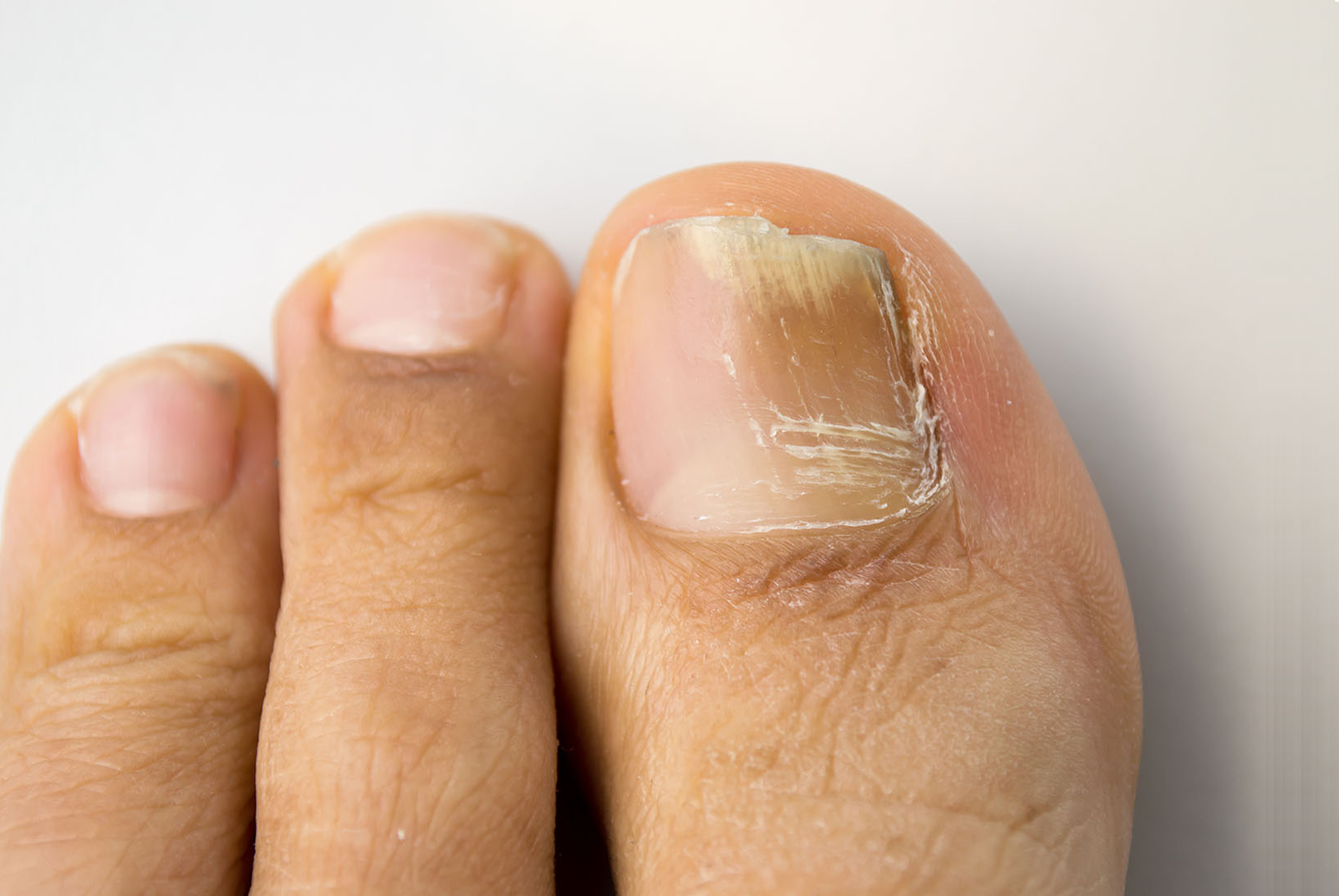Causes And Symptoms
Fungi spreading from athlete’s foot (known as ‘dermatophyte fungi’) cause most fungal nail infections. In some cases, fungal nail infections are caused by yeasts (eg. Candida) and moulds which do not cause athlete’s foot. These other fungi tend to attack nails that are already damaged, as it is easier for the fungus to invade. Fungal infections of the toenails are very common (1 in 4 people can be affected). Warm, moist environment helps fungi to grow and cause infection. Wearing occlusive footwear or using shared showers, bathrooms or locker rooms can increase the risk of fungal infections.
Fungal skin infection are more likely to develop if you have the following risk factors
- High humidity environment such as non-breathable shoes or sweaty feet
- Occlusive footwear
- Males
- 18 to 60 years of age
- Smokers
- History of diabetes
- People who are immunocompromised
Symptoms of fungal skin infection
Fungal skin infection does not have 1 distinct symptom, Trichophyton rubrum, the most common cause often appears as dry chalky skin on the sole of the foot, a location typically overlooked by patients and doctors. When the skin on the foot infection, it acts as a fungal reservoir which infection can spread. Toenails may also then be affected, resulting in unsightly and abnormal looking nails.
Typical appearance of fungal skin / nail infection include
- Itchy, peeling or whitish appearance in between toes
- Itchy small blisters at soles of the feet
- Inflamed
- White / yellow discolouration of nails
- Thickening and crumbly nails
Complications of fungal skin / nail infection
For most people, fungal skin and nail infections are nothing more than an inconvenience. However, changes to toenails such as thickening and discoloration, will lead to unsightly appearances. For older patients, this also mean that basic nail care may pose the be difficult. Fungal infections on the foot may also compromise the skin integrity, causing cracks or breaks in the skin, allowing bacteria to enter, leading to serious soft tissue infection, which often requires treatment with antibiotics.
Podiatrist Recommended Care Tips For Prevention Of Fungal Skin Infections
- Maintain good foot hygiene and treat mild fungal infections before it spreads.
- Wear well fitting shoes, avoid wearing shoes that are too narrow. Keep shoes dry and replace any old shoes that may be colonized.
- Wear clean absorbent socks made of natural fibre such as cotton or bamboo. Change socks daily.
- When in communal areas, avoid going barefoot, wear a slip-on shoes such as slippers.
- Do not share footwear or socks with others.
